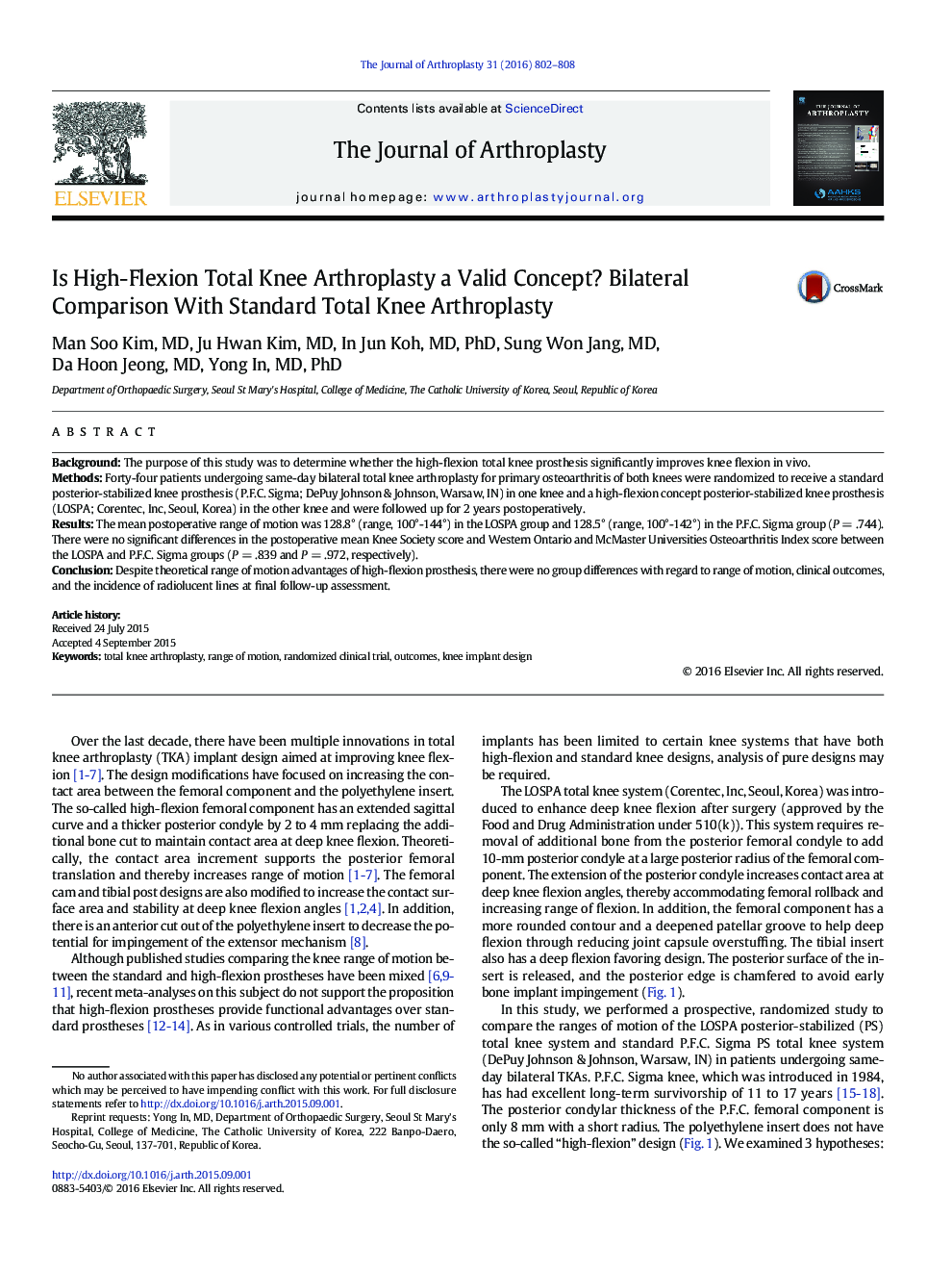| Article ID | Journal | Published Year | Pages | File Type |
|---|---|---|---|---|
| 4060075 | The Journal of Arthroplasty | 2016 | 7 Pages |
BackgroundThe purpose of this study was to determine whether the high-flexion total knee prosthesis significantly improves knee flexion in vivo.MethodsForty-four patients undergoing same-day bilateral total knee arthroplasty for primary osteoarthritis of both knees were randomized to receive a standard posterior-stabilized knee prosthesis (P.F.C. Sigma; DePuy Johnson & Johnson, Warsaw, IN) in one knee and a high-flexion concept posterior-stabilized knee prosthesis (LOSPA; Corentec, Inc, Seoul, Korea) in the other knee and were followed up for 2 years postoperatively.ResultsThe mean postoperative range of motion was 128.8° (range, 100°-144°) in the LOSPA group and 128.5° (range, 100°-142°) in the P.F.C. Sigma group (P = .744). There were no significant differences in the postoperative mean Knee Society score and Western Ontario and McMaster Universities Osteoarthritis Index score between the LOSPA and P.F.C. Sigma groups (P = .839 and P = .972, respectively).ConclusionDespite theoretical range of motion advantages of high-flexion prosthesis, there were no group differences with regard to range of motion, clinical outcomes, and the incidence of radiolucent lines at final follow-up assessment.
